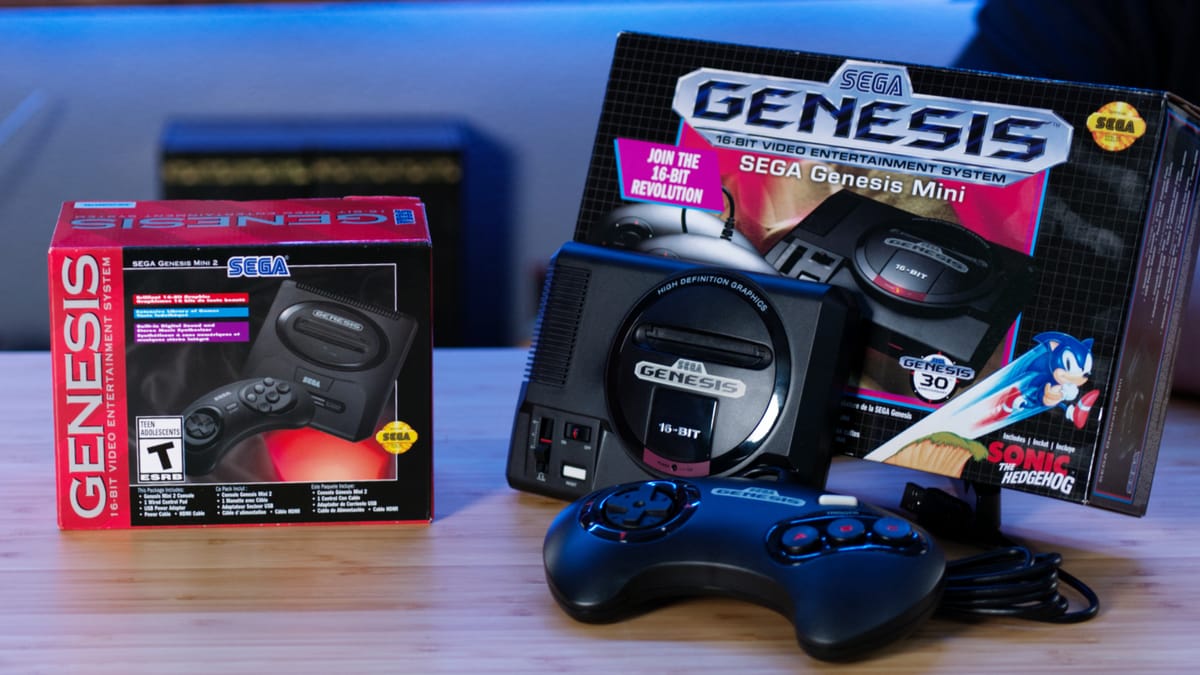
I grew up poor. Dirt poor, in fact. I never owned a NES, SNES, Genesis, SegaCD, or really any console as a kid. Instead, I’d rent a console from Blockbuster or visit a friend who had one. Most of my friends were Nintendo kids, but a few of them had a Sega Master System, Genesis, or other consoles that our parents still called “Nintendos”. While I missed out on a lot of incredible games having not owned the console, I also got to experience some that were formative for my love of RPGs, tactical games, and platformers. Games like Herzog Zwei, Shadow Dancer, and Shining Force had me headed back to that Blockbuster on a routine basis – I couldn’t get enough of em. Fast forward to today and Blockbuster may be gone, but my love of Sega hasn’t waned in the slightest. A follow-up to last year’s fantastic Genesis Mini, we’ve got our hands on a Sega Genesis Mini 2. Let’s take a look inside this tiny box and see if Sega can outdo themselves with the sequel.
The first thing I noticed pulling the system from the box was that the Genesis Mini 2 has been put on a diet. It’s even smaller than the first one, but any weight it lost has been gained by the controller. Sega heard our complaints about the three button controller from the first system and has included a six button controller this time, albeit only one of them – you’ll want to pick up a second one for games like Golden Axe II. I’m getting ahead of myself with these game name-drops though. Also inside the box is a USB cable for power, as well as an included power brick to plug it into the wall. Rounding things out, there’s also an included HDMI cable for the 720p HDMI output on the back of the unit, though just about any cable will handle a 720p signal, so feel free to use a longer cable if needed.
The Genesis Mini 2 has a few fun little features that are more for nostalgia than purpose. The top-loading cart slot has a dual-door system just like its big brother counterpart. While there’s no need to keep dust out any more, it lives on as a fidget distraction for me, and that’s making my brain happy. Just like its predecessor, there’s even a small non-functional slot on the side for the SegaCD sidecar attachment. Here it’s just an empty spot, but a man can pretend, can’t he?
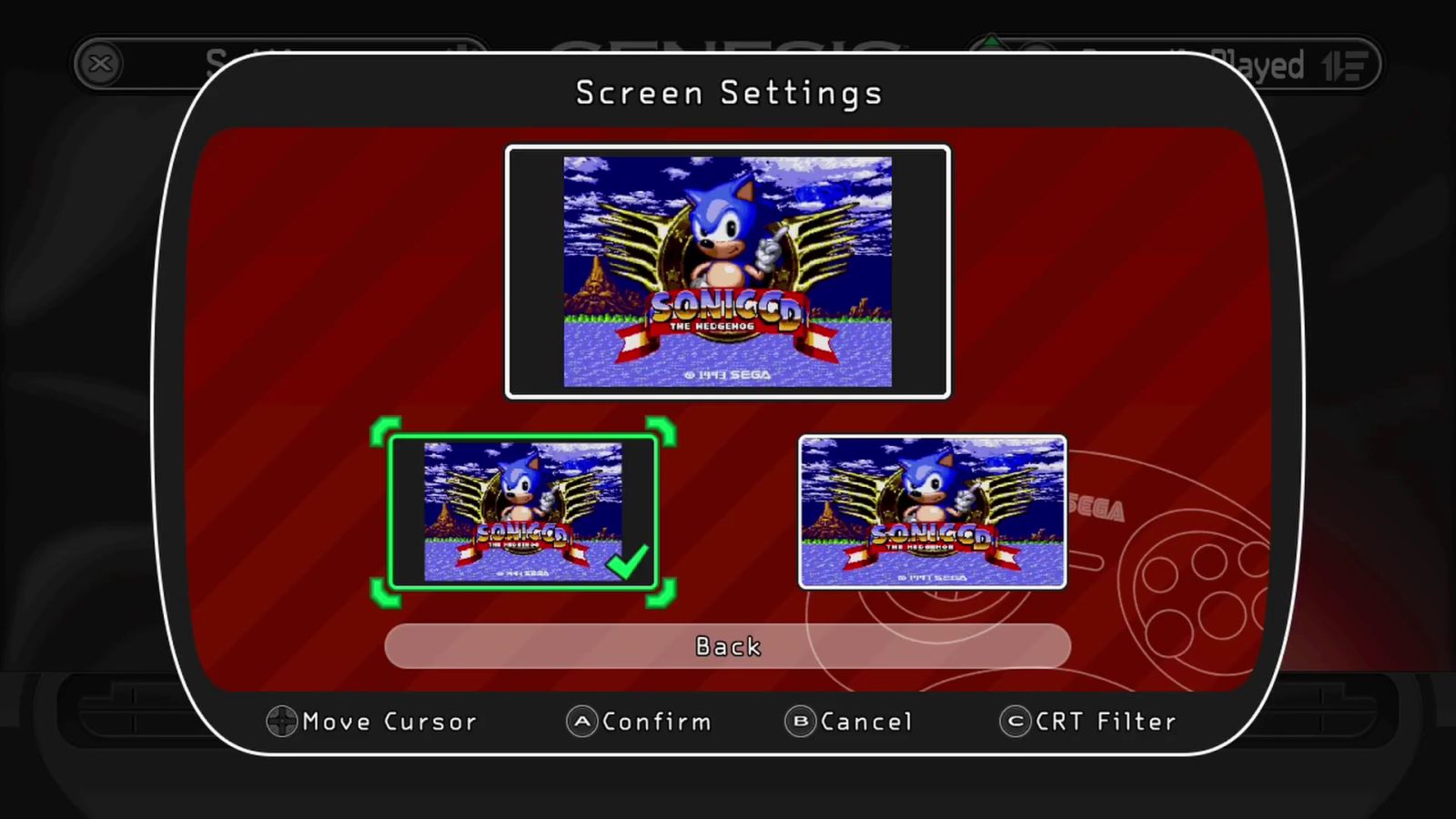
For those interested in console collection, the Genesis Mini 2 is based on the Japanese model of the console, so you’ll have a power switch instead of a button like we saw on the US release of the original console.
Hardware aside, it’s time to dive in and take a look at the software and the 61 games included on the Sega Genesis Mini 2, as well as some of the cool side features that make this one special.
The first thing I noticed when I fired up the Mini 2 was that the M2 team has put a stronger processor into the device. Moving around the titles is snappy, the artwork loads faster, and overall it’s simply a smoother experience. The Genesis Mini was no slouch, but the Mini 2’s menus are buttery smooth – something I hope extends to the games.
There are a number of sort options from the main menu, including sorting by recently played, A to Z or Z to A for title, and you can even flip them to spine-out for ease of viewing. It makes finding what you want to play, or replay, a breeze.
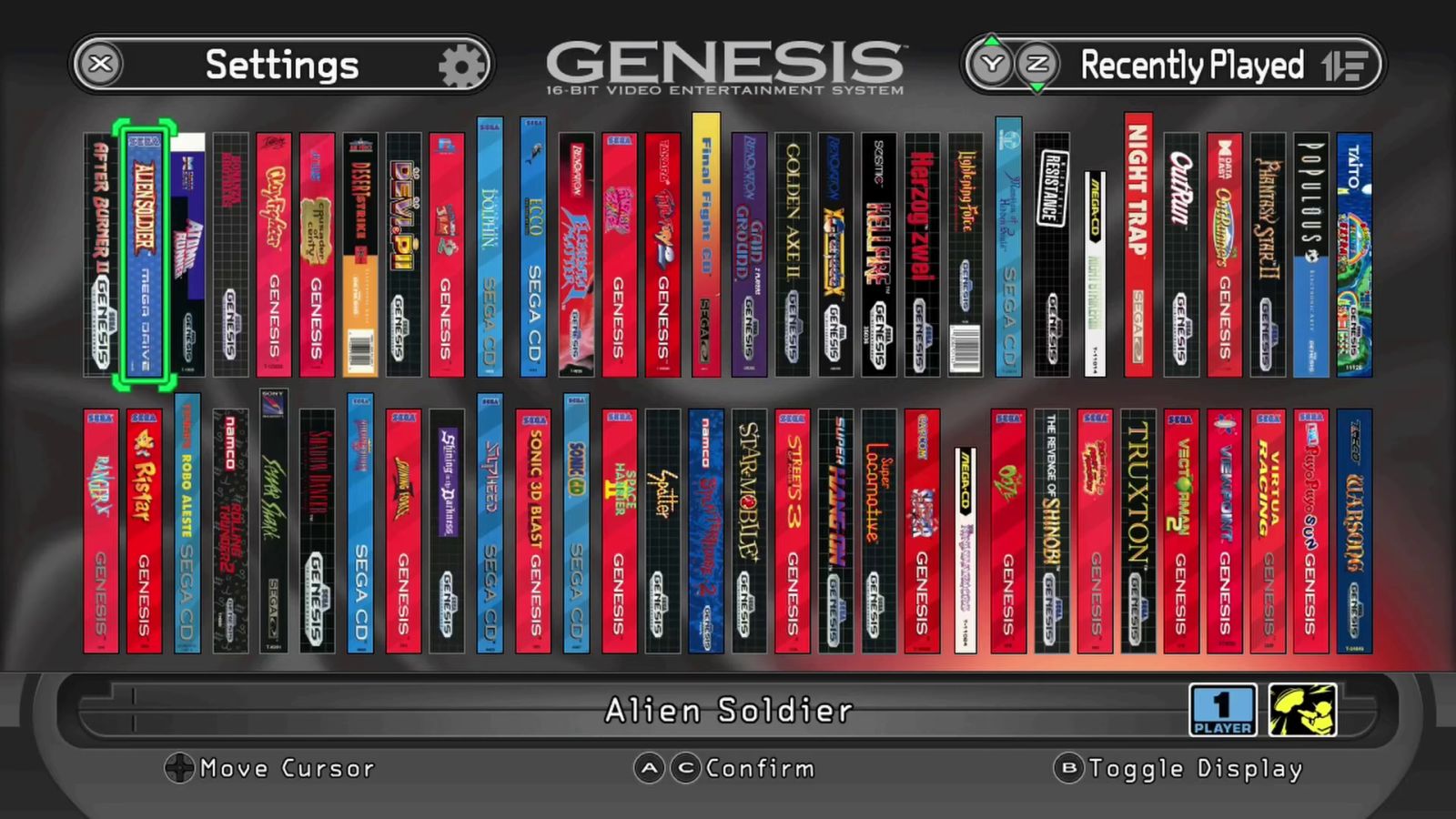
For those who want to use the Genesis Mini 2 in another language, you’ll find Japanese, English, French, Italian, German, Spanish, Traditional Chinese, or Korean as selections for your main menus, though this will come up a bit later when we get to gameplay, so hold that thought.
One of the small mercies is that our brains happily fill in what we remember with far rosier versions. As such, we fill in a whole lot of pixels. You can revisit those same pixels by tapping the Screen Settings selection which toggles between a CRT filter and the sharpened standard. The CRT filter is a software emulation of our old crummy tube TVs, and it’s just…ok. I find that this toggle comes in handy in some games by making text more readable, but muddies others that can be overly busy to start with. It also seems to make things a bit darker. Beyond the CRT emulation, you can toggle between 4:3 and 16:9 aspect ratios.
Beyond screen settings you’ll find a wallpaper selection that lets you choose from various designs, frames, and wallpapers. It kinda reminds me of the way some of the 60-in-1 arcade cabinets use a Hyperspin frontend to showcase games.
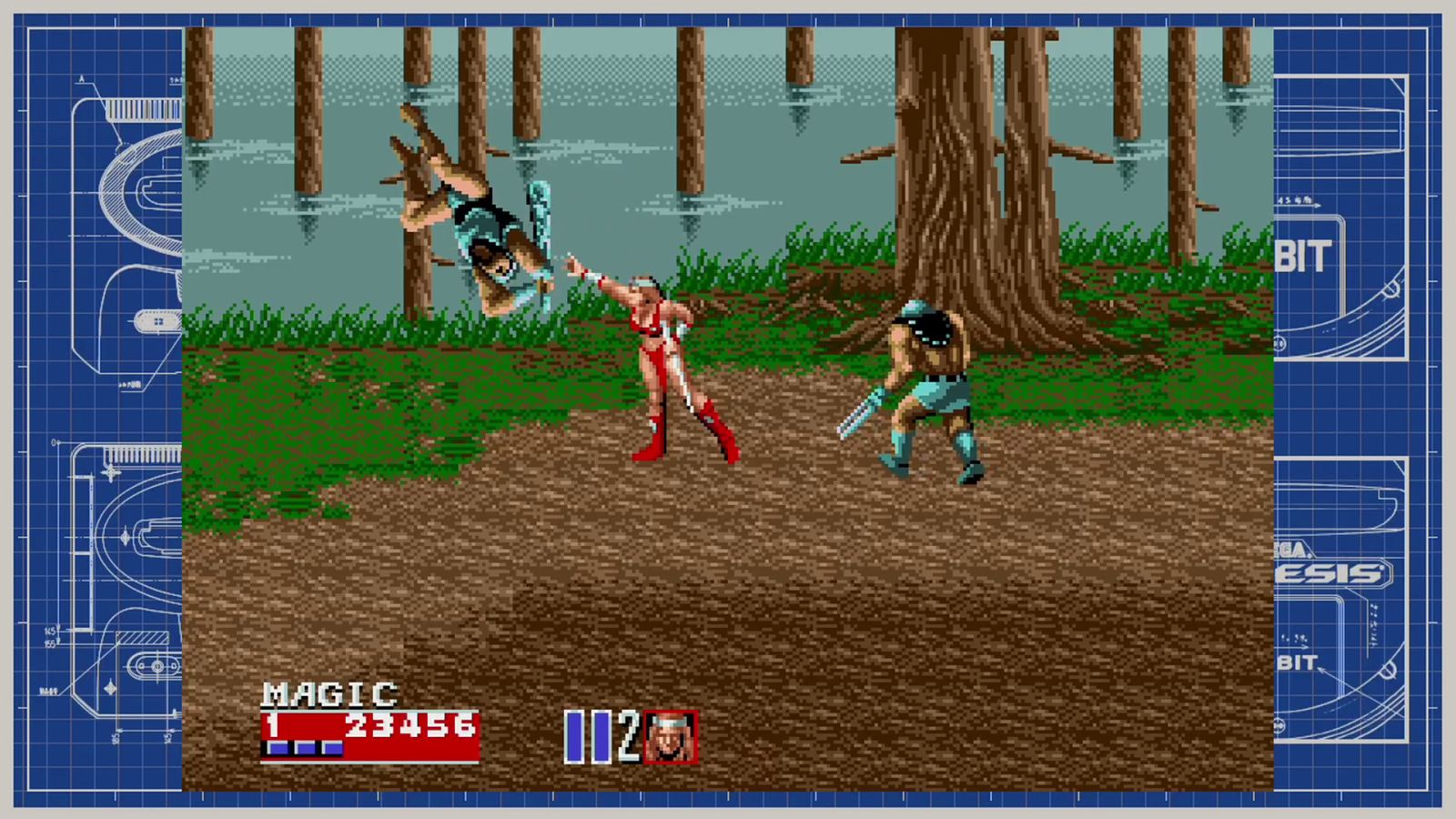
When you do select a game you’ll often be greeted with a handful of options. Most times it’s just a swap of written language, but occasionally you’ll find a special mode. For example, you’ll find an easier mode in Phantasy Star II which eases the grind a bit – something that was rather rough in the original release. There’s one other way to access alternate versions though – back to language selection!
Japan has gotten some fantastic versions of games that came to the states in some altered format. Well, with the Genesis Mini 2 allows you to access those games by simply changing your language to Japanese! Suddenly you’ll have access to the version from across the pond. You even get the Japanese box art, which is a nice touch. The best example of this is King Colossus which very much reminds me of Rygar – high praise from me.
Unboxing the system there’s one big difference between the first and section iteration of the Genesis Mini – the controllers. The Genesis Mini 1 came with two controllers, and they are full-sized, but they are the three button version that came with the original console. The Genesis Mini 2 comes with a smaller six-button controller, but you’ll need to pick up a second one for anything you’d like to play with two players. Thankfully, third party controllers work perfectly – I picked up a wireless one and a Saturn one from Retro-Bit and they both work without a hitch.
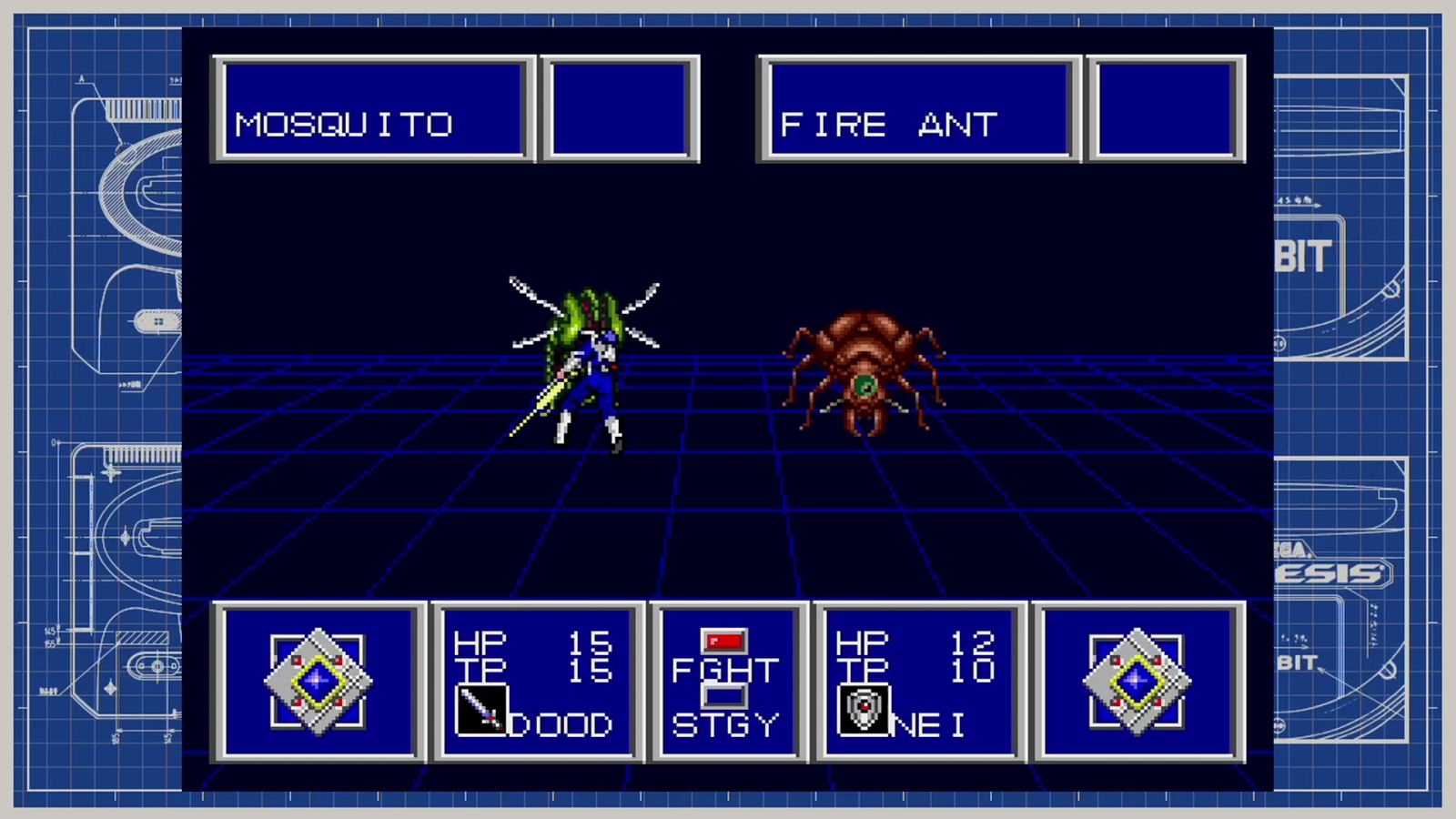
Interestingly, you now have a fresh option for the Genesis Mini 2 – two different sound chips. The Genesis sound chip has what appears to be a low-pass filter on it, providing a beefier sound, especially in games like Revenge of Shinobi. The Genesis V2 chip is clearer, if a little less bass-heavy. You can really hear the difference, but it’s really your choice on which you’d prefer – it’s nice to have the option. That said, there’s something a little odd about the V2 – about 4-5 frames of sound lag. You hear it mostly when you switch menu options and you hear the selection before you see it. Honestly, it doesn’t seem to affect gameplay in any meaningful way – just something I’ve noticed.
We’ve talked a lot about the hardware and software, so now for the part you’ve been waiting for – let’s talk about some of the highlights of the 61 titles you’ll find in the Mini 2.
I’m not going to go through every single game on top of the video above, but we’ll tackle a handful of these in alphabetical order with a short bullet on each. Before we get to those, however, I want to point out something cool. Sega has included the original manuals to all of these titles on the official Japanese website for the Sega Genesis Mini 2. You can find that right here if you need a trip down large-box memory lane.
- Alien Soldier – This one is new to the United States from 80s mainstay from Treasure. In a time where characters lacked detail and were often super tiny, Alien Soldier goes the other way. Big (and bizarre) bosses, a big main character, big weapons – just BIG. It’s also a lot of fun…just know that it’s extraordinarily tough – you are gonna die. A lot.
- Clay Fighter – There are so many fighting games from the 80s out there, so it’s nice when developers try something new. Here we have developer Visual Concepts jumping on the Killer Instinct / Mortal Kombat personality style fighting games, but using a unique claymation animation style.
- Crusader Asenti – I’d never heard of this one until I got the Mini 2, but I’m glad I’ve got it in my library now. It’s very much inspired by the likes of The Legend of Zelda, and is really one of the top shelf titles that make this mini console worth owning. Don’t sleep on this one.
- Desert Strike – This is the game that kicked off the series, and it is pure nostalgia goodness. It’ll take a second to get used to the tank controls in the air, but once you do you’ll be roaring through the skies, whipping missiles into enemy strongholds in no time.
- Devi and Pi – Here we are with another title that was exclusive to Japan, but this time with a twist. This game was canceled before it was released, so this is the only place you’ll likely see it. It very much reminds me of a bartop game you’d find in a pool hall. It’s kinda like pong, and it’s in Japanese, so it’s more nostalgic than a mini console seller.
- Earthworm Jim 2 – On the first Genesis Mini we got Earthworm Jim, and for this mini console we have Earthworm Jim II. Far sillier than its predecessor, the game is an absolute blast. Well, other than having to drag that damned balloon in Flying King….
- Ecco the Dolphin / Ecco the Dolphin: Tides of Time – We got Ecco on the first Genesis Mini, but now we’ve got the definitive edition from the Sega CD. With it comes the excellent soundtrack for both games. While the final level for the first title may still give us Giger-esque nightmares, it’s awesome to get the definitive edition here.
- Fantasy Zone – This is a fantastic shmup from NEC Avenue. Controlling Opa-Opa (yep, that’s the name of the ship…) you’ll blast your way through ultra-bright levels, taking out enemies and bosses for coins that you can use to buy upgrades. This sort of progression in shmups was rare, and to see it with bright and colorful art instead of all Grimdark is nice for a change.
- Fatal Fury 2 – Here’s where having a six button controller is a must. I’ve played more than my fair share of Fatal Fury 2, both on consoles and in arcades, and here we have an excellent port of the arcade version. Big thumbs up here.
- Final Fight CD – From one fighter to another, this is an excellent port of the Sega CD version of the game. Two player brawling, tight controls, and the excellent CD soundtrack make this the side scrolling beat-em-up you’ll want to tackle with your friends.
- Golden Axe II – Another great multiplayer game. Grab a second controller and smash up treasure goblins and weird egg-shaped whip-tail creatures. This time around we swap potions for magic books, but the beats are mostly the same as the previous game. If you liked Golden Axe, you’ll dig the sequel.
- Herzog Zwei – Yep, this is what I came for. This game is one of the first RTS titles I’ve ever played, and it started a love of strategy that endures to this day. This game is the granddaddy to games like Dune II and Warcraft, setting the stage for those excellent titles just a few years later. Rather than controlling a mouse cursor, you fly a fighter around the map to construct your buildings and army. Even now I’m floored at how robust and balanced this game truly is. Even 30 years later, this game brings back some fantastic childhood memories. This right here – this is the system seller for me. It’s just that good.
- Lightening Force: Quest for the Darkstar – This title wins for the dumbest North American rename, being called Thunder Force IV in Japan. Also, Lightening Force is not a misspelling. Thankfully this shmup is an absolute blast to play. Yes, it still has some slowdown, just like we saw on the original Genesis, but it’s nothing too egregious given just how much chaos is going on. Seriously…”Lightening”.
- Night Striker – This is another new title for the United States, and frankly I’m not sure why the M2 team decided to include it. It’s frankly hard on the eyes, far too pixelated for its own good, and downright hard to play as a result.
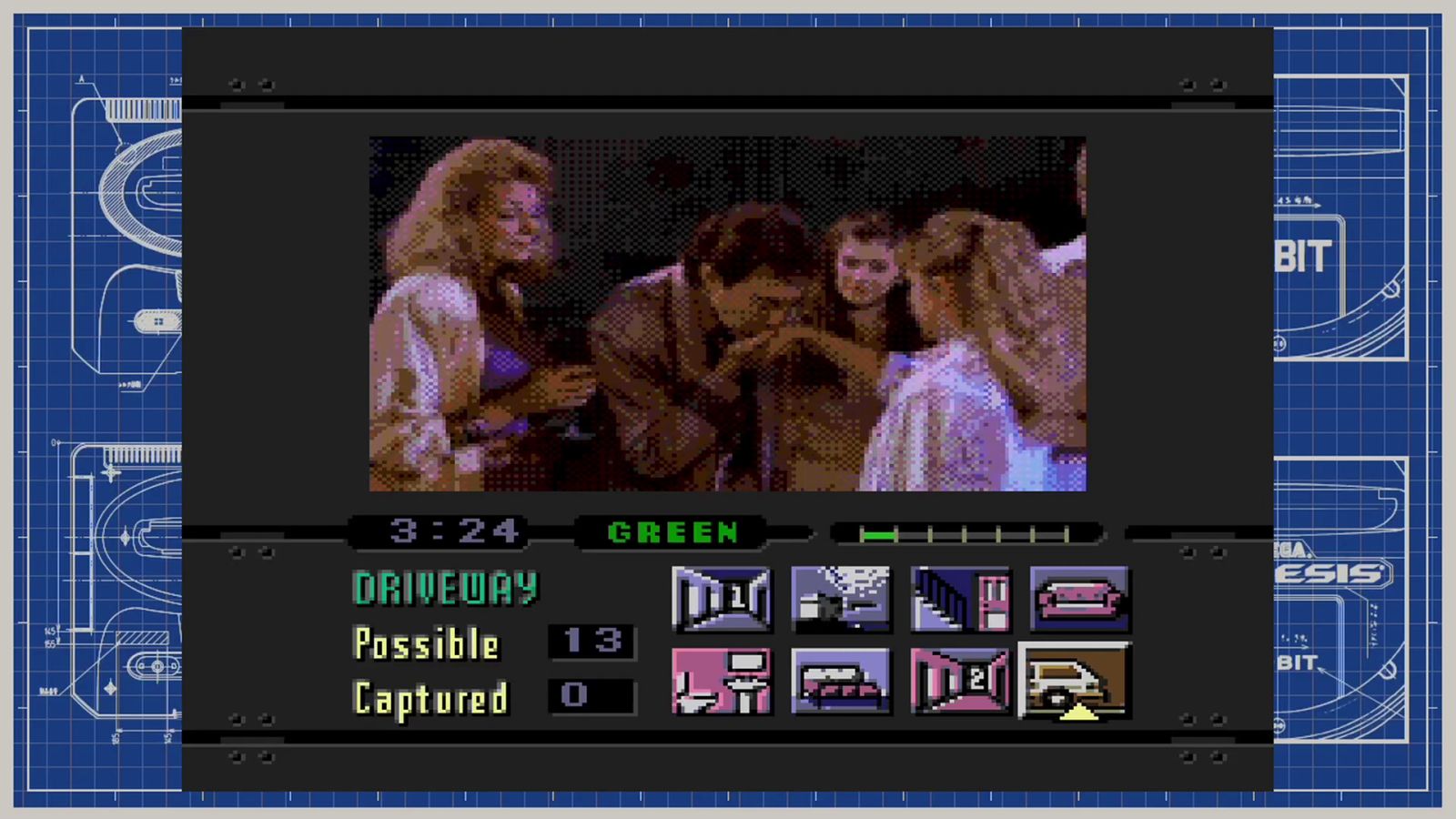
- Night Trap – Yep, this game is the reason why we have the ESRB. It’s the reason why Congress got involved in the videogame industry, looking extraordinarily out of touch and downright stupid as a result. All of that aside, this is the Sega CD version of the game from original developer Digital Pictures, starring Dana Plato from Diff’rent Strokes. Here’s the big story beats for those who haven’t played the original version, or the recent re-release on the PS4. You play as a member of SCAT (Special Control Attack Team – sigh…) who are in charge of an investigation of strange otherworldly activities against a local group of teenagers. You’ll do this by hacking into the extensive CCTV system at their obscenely-large home. Spying on the slumber party in progress (I’m not making this up, I swear), you find that a group of vampire creatures called Augers are intending to capture the B-movie teens. You then use a series of traps hidden all around the house to stop them in their tracks. It’s like if Home Alone was made by a schlocky horror director, with all of the special effects and writing quality of Halloween III: Season of the Witch, with all of what that statement implies. It’ll take you about 30 minutes to complete, if you manage to jump between the cameras fast enough to stop the Augers and other potential calamities, though you’ll still want to let some of these idiots get captured just to shut them up. Frankly, it’s tame by today’s standards. Play it for yourself and then remember just how absolutely dumb we all looked when this ended up in front of Congress.
- Phantasy Star II – This is another game that got multiple rentals for me. Phantasy Star II is another one of those games that set up everything that came afterwards. Released in the United States two months before Final Fantasy, this game had excellent animations for its combat, big sprites, gorgeous graphics, and a fantastic storyline with a sci-fi twist. It also featured some bafflingly painful design choices like the combat sprites that slowly fade in and out, exacerbated by the frequent random combat, and drab dungeon designs. Thankfully, this game benefits from the second look by M2, giving us a way to fast forward those fade-outs and other slow bits of combat.
- Ranger X – Another game I never got to play, Ranger X is a fantastic mech-based game from developer GAU Entertainment. Running and gunning, this side scroller tries out a lot of awesome concepts that were way ahead of its time. Modular weapon designs, a secondary vehicle you can fly/ride, and even cutscenes are right here. It’s another big hit for the Mini 2.
- Ristar – Remember when Sega thought this lil star guy was going to be their potential mascot? Yeah, we all collectively said no to that idea – we already had a mascot, and his name is Sonic. Still, this is a fun little platformer and completely earns its spot on the Mini 2. Try it out – you’ll find a bright, colorful, and fun little game.
- Rolling Thunder 2 – I played this to death in the arcade, and now I can play it at home. The team took inspiration from the long-legged look of Japanese manga and pulled it right into this game as sprites. This is another system seller, complete with its stellar and highly-memorable soundtrack.
- Sewer Shark – This game’s exclamation of “I’m Ratigator Bait!” is forever seared in my brain. This title is another FMV SegaCD game that can be beaten in somewhere between 40 minutes and an hour if you do well. The gameplay is essentially a first person rail shooter where you play a “Sewer Jockey ” charged with clearing mutant sewer monsters out of the, you guessed it, sewers. Try it for nostalgia and enjoy the fact that the loading times are far shorter than they were on the SegaCD.
- Shadow Dancer: Secret of the Shinobi – Honestly, I could have almost bought a Sega Genesis and SegaCD for the amount of money I spent renting this game and the console to play it on. I loved playing the first one with its oversized bosses on the first Genesis Mini, but this sequel is so improved over that title that it’s hard to believe that it’s a part of the same series. This one has a dog, ergo, it’s perfect.
- Shining Force CD and Shining Force 2 and Shining in the Darkness – I have played through these games multiple times (though Darkness is a departure, being a 3D dungeon crawler) and helped hone my love of tactical turn-based titles. Containing concepts that made their way to other tactical titles years later, including a fully-baked job system, Shining Force CD is a serious upgrade to the game we got on the first Genesis Mini. It’s another system seller, even if you aren’t into the Baldur’s Gate style of the sequel.
- Sonic CD – This one should have been a slam dunk, but it isn’t. You can play the US version with the remastered soundtrack, and that’s pretty fantastic, but arguably it’s not the “correct” soundtrack. Jump over to the EU version and you’ll get the correct soundtrack, but somehow a whole bunch of stuttering is introduced. Flipping to Japanese language has the correct soundtrack, and none of the judder, but you might struggle with the language barrier. It’s nice to have options, but this is one I’d have been ok with a fourth option – English, correct soundtrack, and best performance.
- Space Harrier 1 and 2 – This game has been a bit of a controversy since Sega started porting it from the excellent arcade title back on the original Genesis. The Genesis title back in the 90s was a stuttering mess. M2 remastered the game and managed to iron out the performance issues, but now there’s a bunch of flickering. It’s nowhere near as bad as the also-included original Space Harrier game, but this one doesn’t feel fully baked.
- Splatterhouse 2 – Most folks have played the first game, but never managed to check out the sequel. Now’s your chance. Come for the possessed hockey mask motif, stay for smashing squishy zombie types so hard that they splatter against the wall in the background with a satisfyingly wet sound.
- Super Locomotive – This is another exclusive for the Sega Genesis Mini 2, and another title that makes me wonder why it’s here. I didn’t expect every game to be a smash hit, but frankly I’m not sure why this game exists, much less is on this console. The hardest of hard passes.
- Super Street Fighter 2: The New Challengers – Do you need convincing to play this? This version introduces new fighters Cammy, Dee Jay, T. Hawk, and Fei Long, alongside new modes like Group Battle, Tournaments, and Time Challenges. I never got the hang of kicking those barrels in the minigame, but now I can at least try without going bankrupt a quarter at a time.
- The Ninja Warriors – I remember playing this in arcades on a setup with not one, not two, but THREE monitors set up in an angled widescreen format. Only released in Japan, this was a rare sighting in the US, and I’m happy to have it here – even if only as a reminder of those nostalgic trips to the SoCal arcades that managed to import it.
- The Revenge of Shinobi – This was the reason to own a Genesis when I was a kid. Unleashing selectable ninjitsu to mow down foes, or covering yourself in a fire wheel or lighting was completely awesome to me. Just having a choice on how to approach a mission was fantastic. Does the trick to get unlimited shurikens still work? Yes, yes it does.
- Toejam and Earl: Panic on Funkotron – Like Earthworm Jim, this sequel is even better than the first. ToeJam and Earl manage to rebuild their ship in the first game, and in this sequel they’ve reached their home planet of Funkotron. The humans unfortunately stowed away and invaded Funkotron, stealing all the funk and scaring off Lamont the Funkapotomus. The 90s were weird, and this is peak weirdness. The soundtrack is a blast, and it’s fun to boot, so give it a try.
- Virtua Racing – While not a great game, it is an impressive one in terms of technology. Not unlike Starfox and its use of the SuperFX chip, this game managed to pull off some fairly technically impressive feats for its time. It doesn’t age well in terms of gameplay, but it’s a marvel in terms of early transitions to 3D graphics.
- Warsong – Another great strategy RPG, Warsong reminds me of other games of this era like North vs. South or more modern titles like Advance Wars. Also known as Langrisser (along with 4 sequels in Japan) this fantasy tactical title had concepts like being able to bolster your army with pre-battle purchases, positioning your troops ahead of the fight, and a full class system for your commanders. Like Herzog Zwei, this game has a very special spot in my heart that grew into my tactical title obsession today.
Some of these games are downright brutally hard, so you might appreciate that the mode button allows you to set up to four save states. Be mindful of where you put them as they can paint you into a corner that you can’t get out of, but they are incredibly handy for the more brutal parts of games like…well, most of them, really. The 80s and 90s were built around the concept of the player having “lives” to expend, so this system might be the chance you have at finishing some of these games. Don’t feel guilty if you lean on save states to finally roll credits on some of these titles.
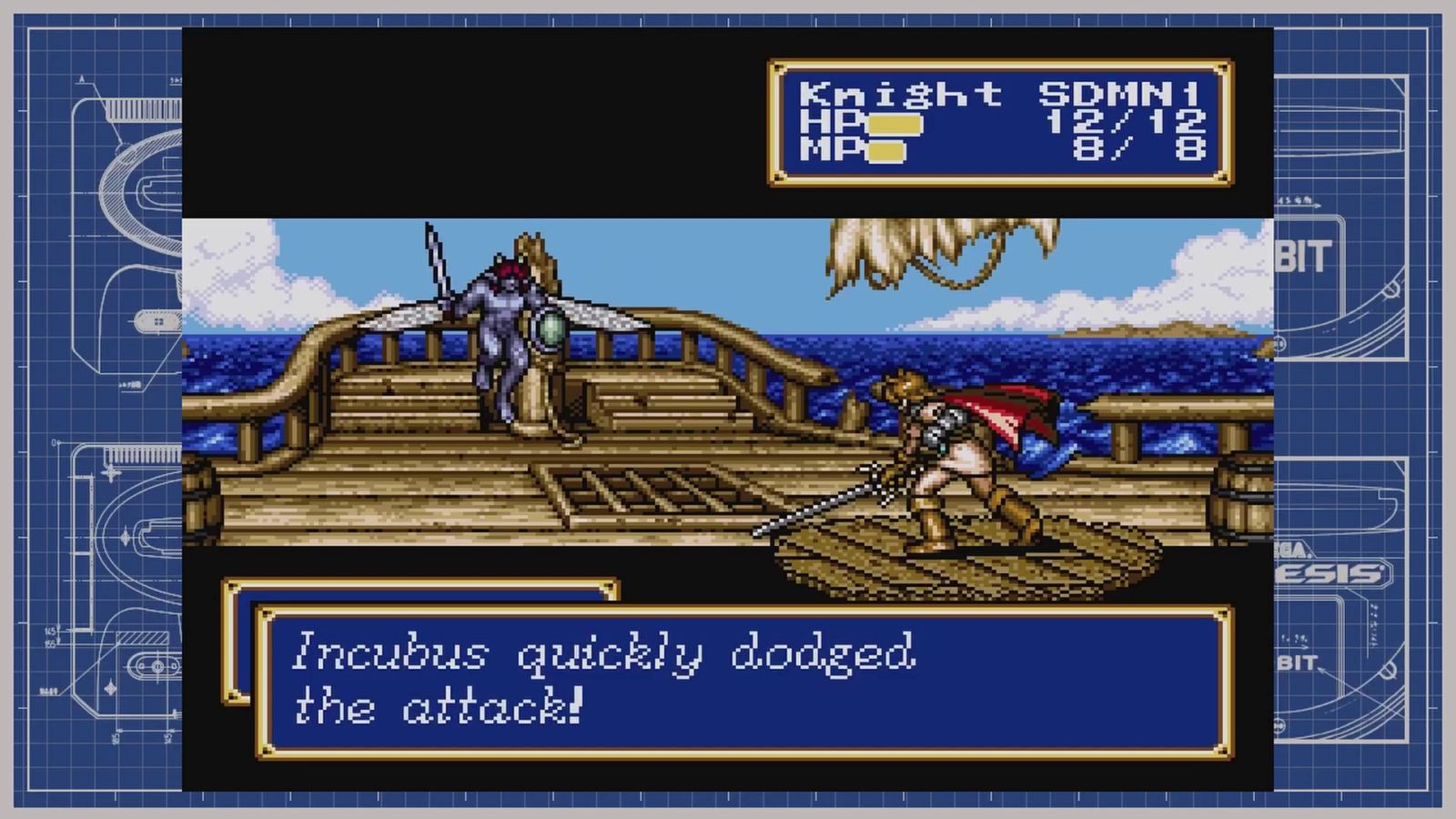
I’m not covering every title on the console here, just the highlights, but I have to point out a glaring omission – where are the Working Designs RPGs? Lunar: The Silver Star and Lunar: Eternal Blue were magical on the SegaCD, and I’ve always wanted to check out Popful Mail and Vay. Perhaps we’ll get those alongside the likes of Dragon Force, Shining Wisdom, and Albert Odyssey: Legend of Eidean should Sega decide to make a follow-up mini console for the Sega Saturn. I’d love to try Shining Force 3 and Hyper Duel, and games like X-Men vs. Street Fighter, Radiant Silvergun, Panzer Dragoon Saga, and NiGHTS Into Dreams would make that an instant-buy. C’mon Sega – make it happen!
SEGA Genesis Mini 2
Phenominal
The Sega Genesis Mini was an incredible mini console, and the Genesis Mini 2 manages to beat it in every way. More titles, and of better quality, and with a few hidden surprises, this is a must-have for any kid like me who never managed to get one, or just somebody who wants to relive the classics. Buy it quick though – these are going to disappear fast!
Pros
- 61 games included, including some classics
- A lot of great title sequels
- Pure unadulterated nostalgia
- Plethora of options for sorting, audio, and presentation
- New modes (e.g. Easy Mode in Phantasy Star II)
Cons
- Where are the Working Design RPGs?!
- A few games in here are just duds
- Some titles have introduced lag or flickering in their port
